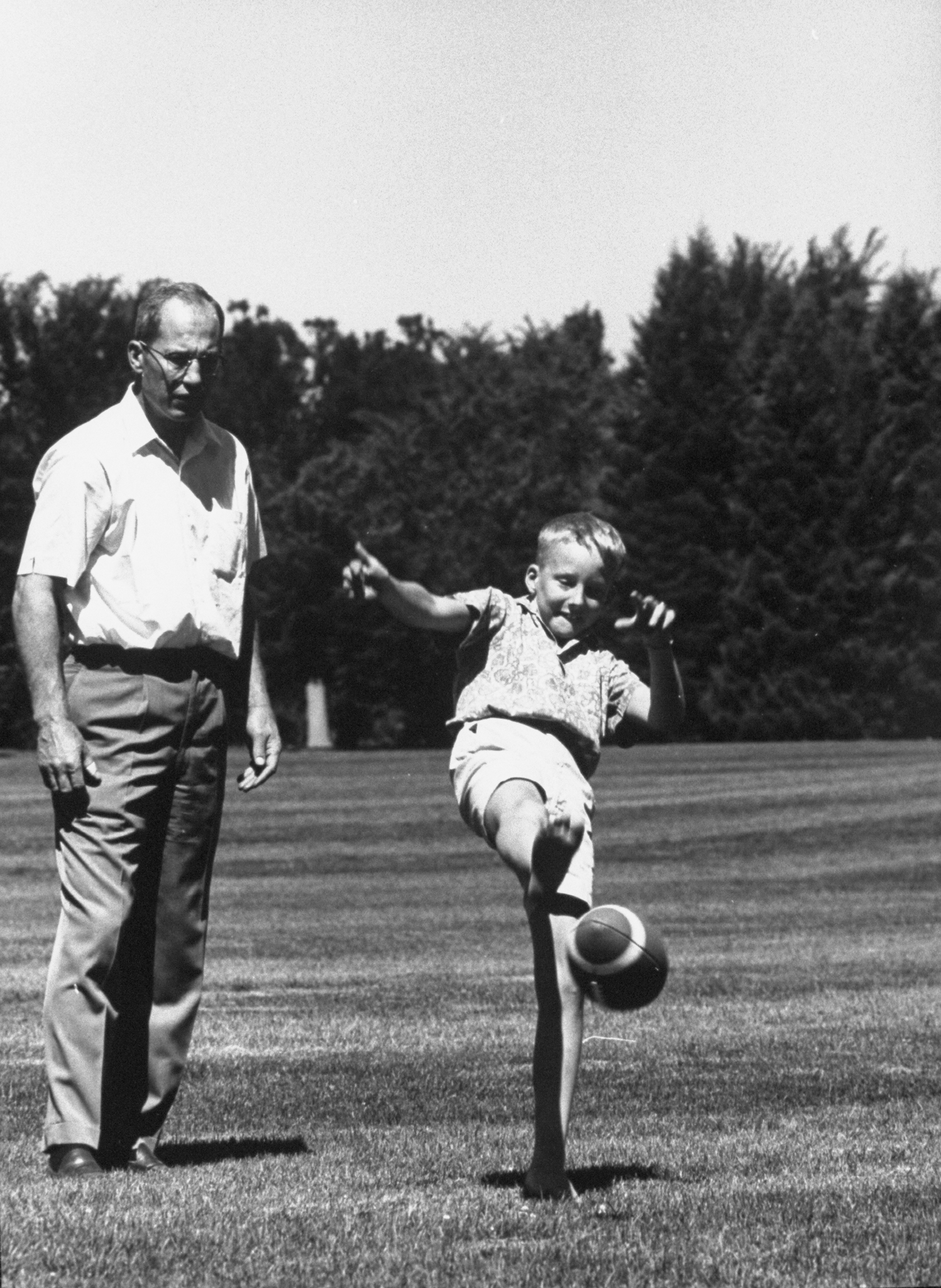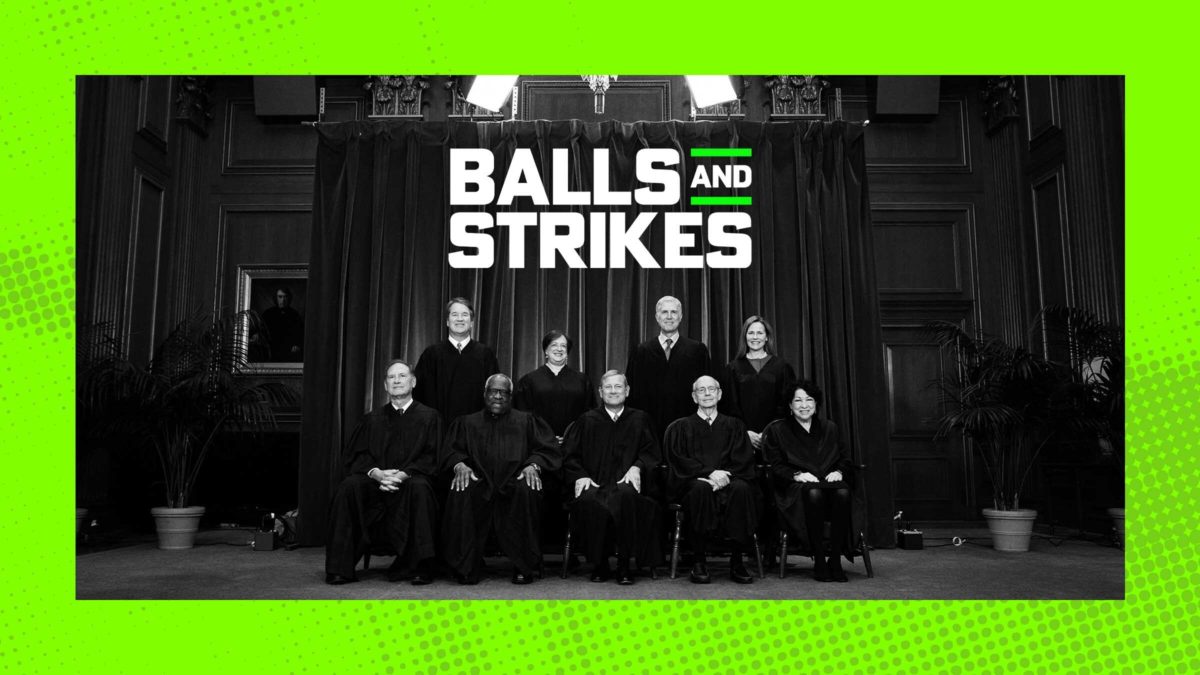As August approaches, it is time once again for America’s dumbest, most sacred tradition: drafting a fantasy football team that you despise with all your heart before the draft is even over. In the spirit of the season, this week’s newsletter will attempt to answer a simple question: If he were available today, where would former Supreme Court Justice Byron White, a Heisman Trophy runner-up who twice led the NFL in rushing, get picked in your league’s fantasy draft next month?
As a justice, Byron White was a generic reactionary pud. Appointed by President John F. Kennedy in 1962, White was famously contemptuous of substantive due process, from which the rights to things like privacy, contraception, marriage equality, and (previously) abortion access are derived. He might be best known for writing the wildly homophobic majority opinion in Bowers v. Hardwick, a 1996 case in which the Court upheld a Georgia statute criminalizing same-sex intimacy and warned of the creeping dangers of “judge-made constitutional law having little or no cognizable roots in the language or design of the Constitution.” (“Proscriptions against that conduct have ancient roots,” White added, in a passage I assume young Sam Alito framed above the living room mantle.)
Before taking the bench, however, White had a very different background from the pool of inveterate appellate nerds from which modern federal justices are drawn: A star college football player at Colorado, “Whizzer” White was selected fourth in the 1938 NFL Draft by the franchise that is now the Pittsburgh Steelers. Already a celebrity and instantly the league’s highest-paid player, he led the NFL in rushing as a rookie and was voted First Team All-Pro.
“He was like Joe Namath,” Johnny Blood, Pittsburgh’s former player-coach, told a newspaper after White’s death in 2002. “People who weren’t necessarily football fans would come to the park not so much to see a game but to see Whizzer White.”

No one saw White play the following season, which he skipped to study at Oxford as a Rhodes Scholar. When the onset of World War II forced him to return to the U.S. early, he enrolled at Yale Law School instead. After 1L year, he took a leave of absence from that to return to the NFL, this time for the Detroit Lions. White led the league in rushing again in 1940, faded just a bit (Second Team All-Pro, humiliating) in 1941, and then retired in 1942 to enlist in the Navy. Please take a moment to pity the second-most successful person in Byron White’s high school graduating class, whom no one thought about ever again.
As a runner, White smoked everybody: In that vaunted 1938 season, he finished with 25 percent more yards on the ground than his closest competitor, someone named “Tuffy Leemans.” But evaluating White’s statistical résumé and fantasy outlook today is kind of complicated, because football looked very different 80 years ago: NFL teams played 11 games, teams averaged around 15 points per game, quarterbacks typically threw more interceptions than touchdowns, and even the most prolific rushers totaled, like, several dozen yards per game. White’s league-leading number that year? 567 yards, which is what Derrick Henry calls “two games, give or take a quarter.”
This was also an era in which backs like White threw the ball regularly, if not well: In 1938, he attempted 73 passes for two touchdowns and a hilarious, Drew Lock-esque 18 interceptions. In 1940, White notched an even funnier, Geno Smith-esque TD-INT ratio of 0-12. For as many fantasy points as he racked up on the ground, those interceptions wiped out a good chunk of the value he would otherwise have provided.
(As a Seahawks fan, is the preceding paragraph my way of coping with the pain I am about to experience for 18 weeks and not a blessed minute more this fall? Let’s move on!)
White wasn’t much of a dual threat out of the backfield, notching fewer than one catch per game. His scoring output was good, not great: 18th as a rookie, 11th in his sophomore season (just behind—again, this is a real name—Pug Manders), and 24th in his final year. If you are, say, the 2022 Seattle Seahawks watching either Drew Lock or Geno Smith hand off to whichever Madden Create-A-Player is taking snaps at running back, White’s career 3.4 yards-per-carry average sounds pretty good! If you are trying to win a fantasy championship, however, this is profoundly grim stuff. (Again, I am coping.)

The fairest way to evaluate White, of course, is against his peers, in the context of the times. And had he kept playing football, he’d be an easy first-rounder in your standard 12-team, half-point PPR league drafting in August 1942. (Even after a down year; right now, we’d be inundated with glowing stories from beat writers about how White is “showing real burst off the line” in camp, and “primed to return to form” and whatnot.)
Ultimately, I think he goes behind superstars like Pittsburgh legend Dick Riffle, Green Bay’s newfangled pass-catcher Don Hutson, and his old archnemesis Pug Manders. But well before the “Best Available” list gets to the likes of Merl Condit, Ace Parker, or Harry Hopp, some manager in your league is going to bet on White’s Christian McCaffrey-esque pedigree and draft capital and hope the gamble pays off..
This method of evaluation, however, would extend to White a generosity of spirit he never showed as a Supreme Court justice. This is a man who argued that the Eighth Amendment’s ban on cruel and unusual punishment did not bar a California law that allowed the state to imprison people for the “crime” of being addicted to drugs. (“There was no evidence at all that appellant had lost the power to control his acts,” White huffed in dissent.) In Doe v. Bolton, the companion case to Roe v. Wade, he excoriated the majority for interpreting the Due Process Clause to value “the convenience, whim or caprice of the putative mother more than the life or potential life of the fetus.” And in Bowers, he sagely noted that the Constitution guarantees no “fundamental right to homosexuals to engage in acts of consensual sodomy,” thus enabling cops to continue to harass gay people whenever they felt like it.
Since White could not fathom the possibility that the law’s meaning might evolve to meet the needs of a sprawling nation no longer governed exclusively by wealthy slaveholders, I feel no obligation to grade his Samaje Perine-ass 3.4 yards per carry on a curve. As a fading back coming off a season of somewhere between 200 and 300 yards and clinging to an increasingly tenuous NFL roster spot, Whizzer White’s 2022 fantasy comp is, like, Colts running back Phillip Lindsay, who is currently the RB78 and undrafted in most leagues. When half your roster is out with ill-timed hamstring pulls and you need a desperation Week 12 flex play, rest assured that Byron White will be sitting on the waiver wire where he belongs.
As always, you can find us at ballsandstrikes.org, or follow us on Twitter @ballsstrikes, or get in touch via[email protected]. Thanks for reading.
This Week In Balls & Strikes
The Many Deaths of Carl Buntion, Barbara Laubenthal
By the time Texas executed 78-year-old Carl Buntion in April, he’d spent 31 years on death row. Here, a friend remembers his final years, days, and hours.
How the Supreme Court Enabled the Border Patrol’s Insane 100-Mile Power Grab, Yvette Borja
The Fourth Amendment doesn’t fully protect the rights of nearly two-thirds of the U.S. population. The justices made sure of it.
The Supreme Court’s Attacks on Tribal Sovereignty Are Just Getting Started, Matt Irby
Brett Kavanaugh’s opinion in Castro-Huerta v. Oklahoma signals an end to the Court’s very brief era of respecting Tribal sovereignty.
This Week In Other Stuff We Appreciated
Justice Neil Gorsuch’s Radical Reinterpretation of the First Amendment, Fabio Bertoni, The New Yorker
The religious maximalist Supreme Court flexes on the libs a little.
Want To Know Where The Supreme Court Goes Next? Look at Alito’s and Thomas’s Dissents, Laura Bronner, FiveThirtyEight
The Court’s two most conservative justices are now writing majority opinions on issues that they repeatedly used to write dissents for.
The Supreme Court’s Extreme Power Grab, Kimberly Wehle, The Atlantic
The majority opinion in West Virginia v. EPA, to be specific.
It’s Time For Democrats to Play Hardball to Thwart Mitch McConnell, Russ Feingold, Politico
How much longer will Senate Democrats fritter away their power to confirm judges?
This Week In Obscure Photos of Supreme Court Justices On Getty Images


